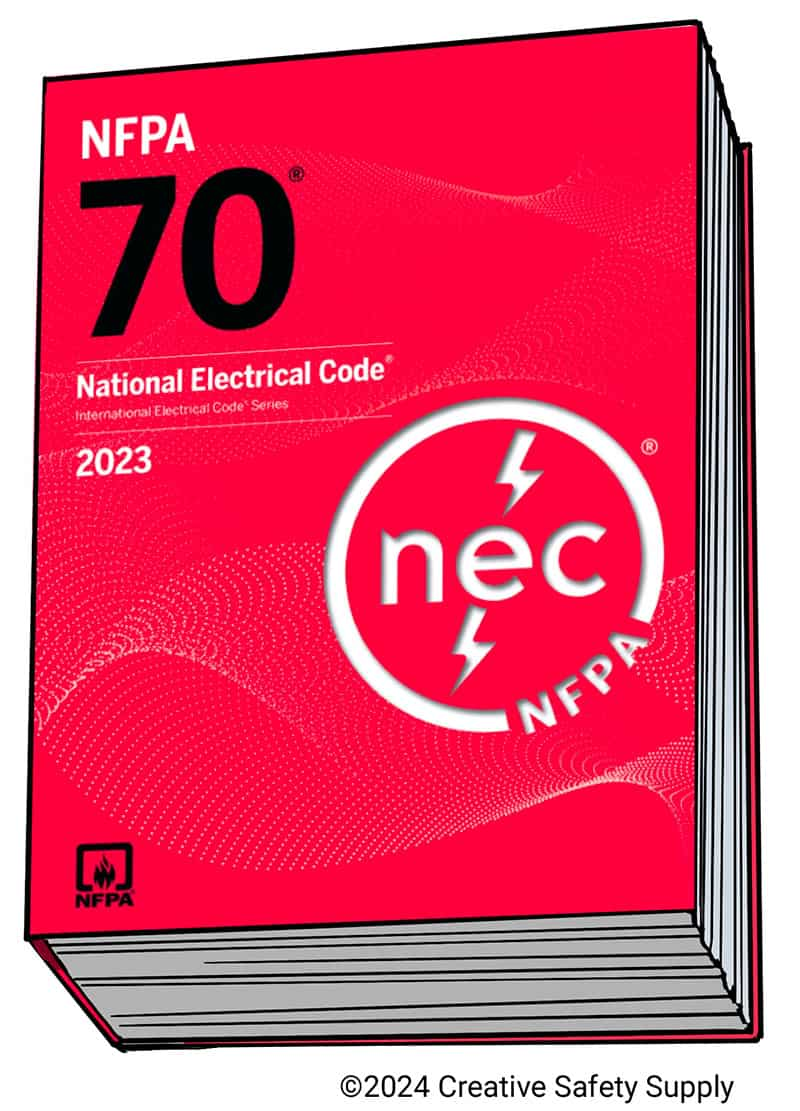
The NEC is the National Electrical Code, a global standard for the safe installation of electrical wiring and equipment. Formally identified as ANSI/NFPA 70, the NEC establishes the basis for electrical safety in residential, commercial, and industrial buildings. Every electrician should be familiar with the NEC’s standards; licensed electricians are taught the Code during classroom trainings and through their on-site apprenticeships—this way all licensed professionals are on the same page. Knowledge of the Code is an integral part of the electrical industry, as the NEC is the most universally adopted and definitive set of guidelines for safe electrical installation. By adhering to the Code, electricians can prevent fires and property damage, and help ensure the safety of themselves and everyone around them.

The National Electrical Code undergoes revision once every three years to incorporate new changes in safety and technology. While the 2017 NEC edition is the most current, a new 2020 edition should be released shortly. The NFPA has administrated the Code for more than a hundred years, and the Code is currently regarded as an important proponent for the NFPA’s focus on electrical safety and self-regulation.
The NEC is broken down into chapters, as well as an introduction and annexes, which contain in-depth information on:
- Chapter 1: General.
- Chapter 2: Wiring and Protection.
- Chapter 3: Wiring Methods and Materials.
- Chapter 4: Equipment for General Use.
- Chapter 5: Special Occupancies.
- Chapter 6: Special Equipment.
- Chapter 7: Special Conditions.
- Chapter 8: Communications Systems.
- Chapter 9: Tables and Annexes.
In addition to overseeing the official editions of the National Electrical Code, the NFPA also publishes NEC handbooks, which contain the entire Code and extra illustrations and explanations.
Not every single state in the U.S. adheres to the same version of the NEC; a few states still enforce the 2011 and 2014 editions of the Code. This is because the NEC doesn’t fall under federal law; instead, it’s regarded as a “uniform code,” simply a set of guidelines that may be adopted and applied as individual states see fit. The NEC Adoption Map, maintained by the NFPA, shows which states have which editions currently in place.
Additional NEC facts:
- NEC stands for National Electrical Code, which is a regionally adoptable standard for the safe installation of electrical wiring and equipment in the United States. It is part of the National Fire Code series published by the National Fire Protection Association (NFPA), a private trade association. Source: https://en.wikipedia.org/wiki/National_Electrical_Code
- The NEC is updated and published every three years, with the 2023 edition being the most current. Most states adopt the most recent edition within a few of years of its publication. However, some states may amend, alter or reject some sections of the NEC, or use their own local codes. Source: https://en.wikipedia.org/wiki/National_Electrical_Code
- The NEC is approved as an American national standard by the American National Standards Institute (ANSI). It is formally identified as ANSI/NFPA 70. The NEC is developed by NFPA’s Committee on the National Electrical Code, which consists of twenty code-making panels and a technical correlating committee. Source: https://www.nfpa.org/codes-and-standards/7/0/70?l=110
- The NEC covers the installation of electrical conductors, equipment, and raceways; signaling and communications conductors, equipment, and raceways; and optical fiber cables and raceways for the following: public and private premises, including buildings, structures, mobile homes, recreational vehicles, and floating buildings; yards, lots, parking lots, carnivals, and industrial substations; installations of conductors and equipment that connect to the supply of electricity; and installations used by the electric utility, such as office buildings, warehouses, garages, machine shops, and recreational buildings that are not an integral part of a generating plant, substation, or control center. Source: https://www.esfi.org/workplace-safety/industry-codes-regulations/the-national-electrical-code-nec/
- The NEC is not a design manual, nor is it a "how-to" guide for electrical installations. It is a performance code that sets minimum safety standards for electrical systems. It does not specify every possible installation method or technique, but rather allows for flexibility and innovation by the installer or designer, as long as the result is safe and compliant. Source: https://www.neca-neis.org/safety-and-the-nec/the-national-electric-code-neca
Similar Questions
- What are electrical safety standards and who enforces them?
- What Does it Mean to be Compliant for Electrical Safety?
- Who Regulates the Labeling Standards for PV Systems?
- What does NEMA stand for?
- What are electrical safety audits?
- What are the Requirements for Electrical Panel Labeling?
- How do electrical fires start and how can they be prevented?
- What are Solar Photovoltaic (PV) Labeling Requirements?
- What does IEC stand for?

